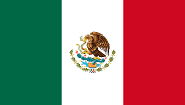Government/Policy

July 11, 2024
Mexico touts Brazil steel carve out from new Section 232 regime
Written by Michael Cowden
The Mexican government said on Thursday that it had negotiated a temporary carve out for Brazilian steel under recently updated Section 232 rules.
Mexico said that the pact would stretch until 2027, by which point all steel exported to the US would have to be “melted and poured” within North America.
“A significant bilateral agreement has been reached to avoid affecting the Mexican steel industry,” the Mexican government said in a statement.
The agreement features “a mechanism ensuring that Brazilian steel processed in Mexico will not be subject to tariffs; that is, the ‘melt and pour’ requirement will not apply to products coming from Brazil,” Mexico added.
The wording of the agreement, and comments collected by SMU from industry sources, indicate that it applies primarily to Brazilian slabs.
Recall that President Joe Biden decreed on Wednesday that steel imports from Mexico would again be subject to 25% Section 232 tariffs – unless they are melted and poured in Mexico, the US, or Canada.
Certain US mills rely heavily on Brazilian slab as substrate or to supplement their own melt. And Brazilian slabs, while subject to a Section 232 quota, are exempt from the 25% tariff.
Likewise, certain Mexican mills also rely heavily not only on slabs melted and poured within the country but also on those sourced from Brazil.
A brief history
Former President Donald Trump in March 2018 introduced 25% Section 232 tariffs on imported steel. To the surprise of many, the national security measure was then extended to include not only offshore imports but material from Canada and Mexico as well.
The Trump administration rescinded Section 232 from Canada and Mexico in May 2019, but this year has seen calls from certain US legislators to re-introduce Section 232 on Mexican steel.







